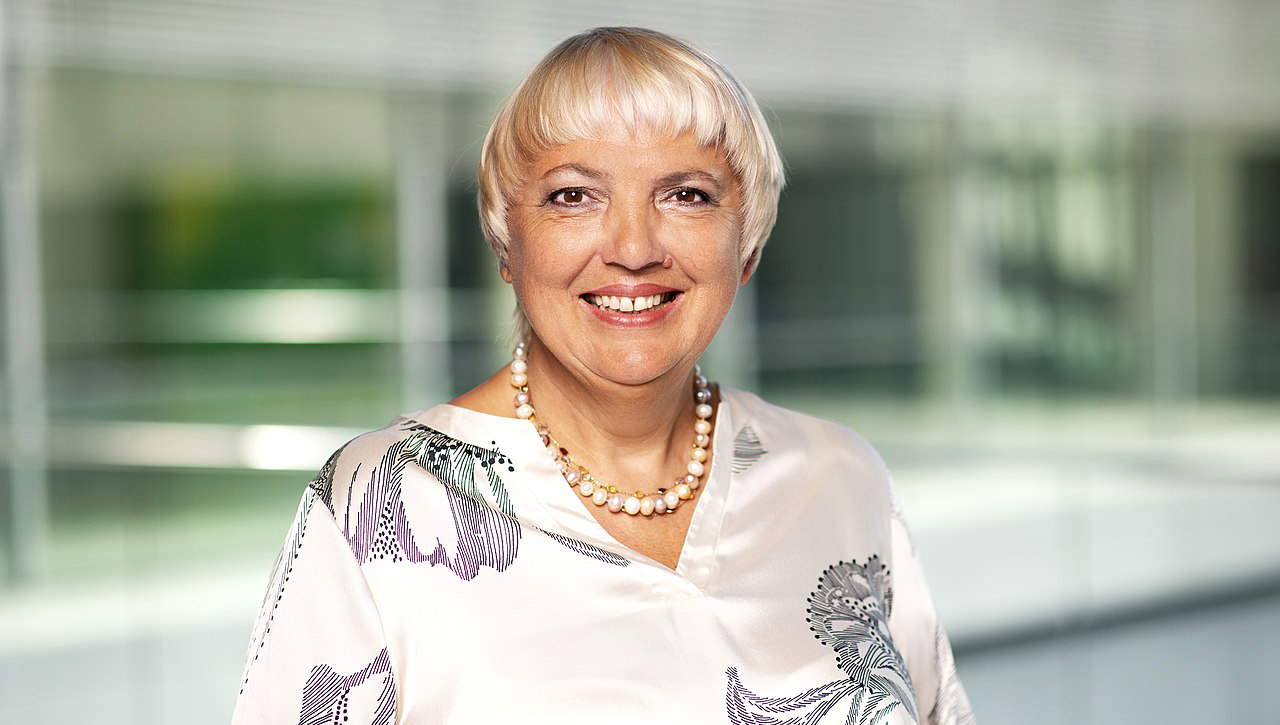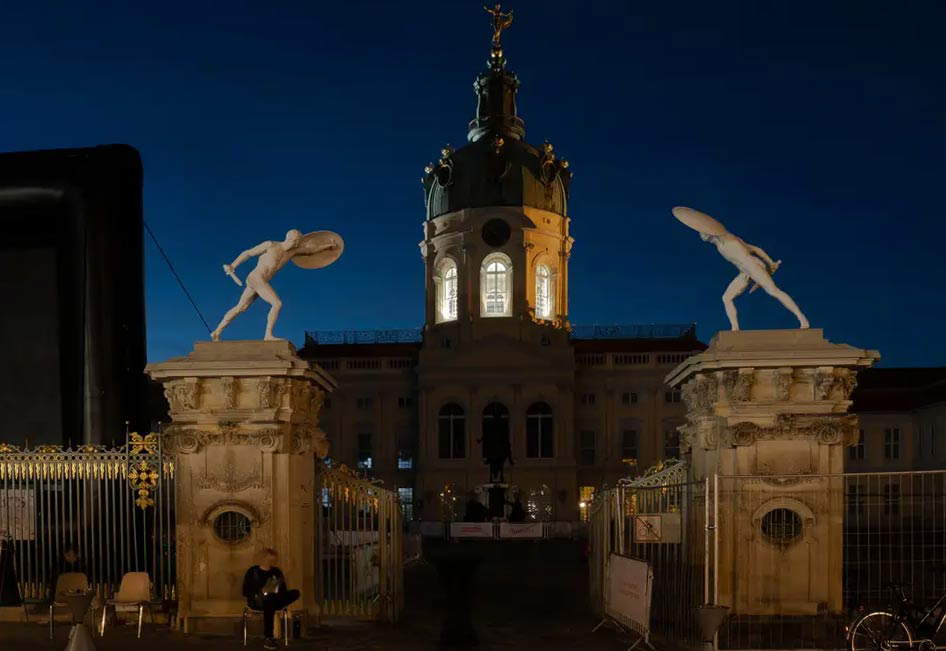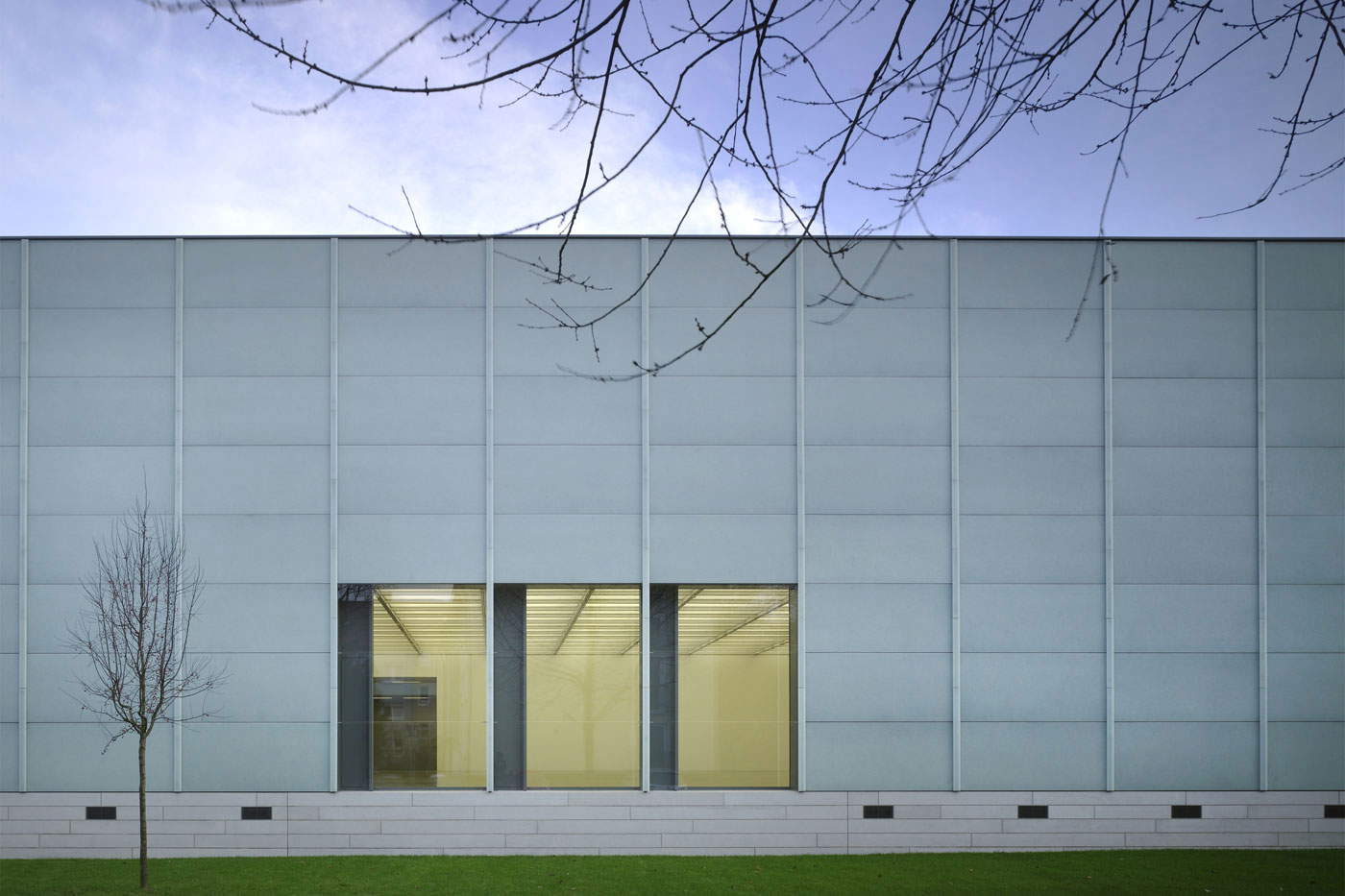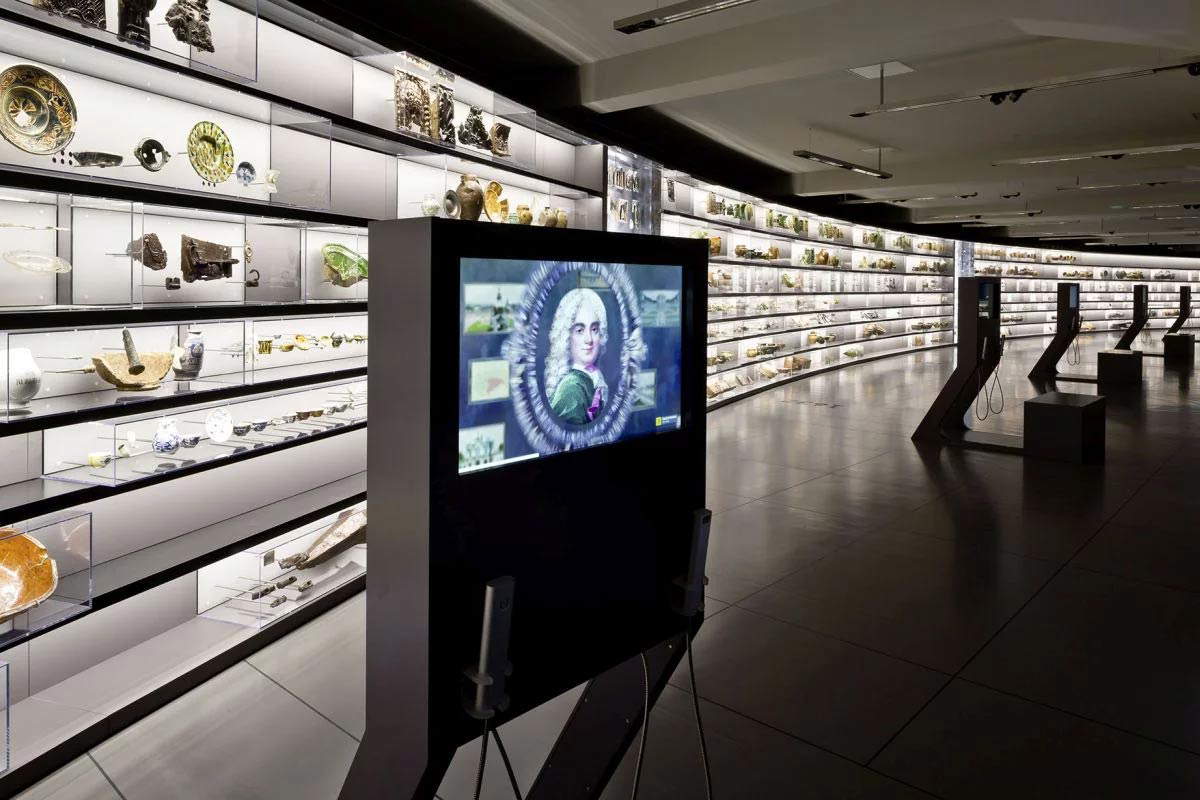In Germany, the public debate in recent weeks, unlike in Italy, has been almost totally monopolized by the energy crisis, disproportionate gas price increases (on August 16, the price of gas at the TTF hub in Amsterdam hit an all-time high of 250 euros per megawatt hour, only to fall back to 224: Aug. 17, 2021, to give an idea, the price was 28 euros) and by issues related to saving electricity, both because of needs dictated by climate change and as a necessity in response to the unfavorable historical moment. The debate is so pervasive that, beyond the Alps, even museums are beginning to be called upon to do their part and to ask themselves how they can help alleviate the crisis, saving the need to open to the public and to ensure the optimal microclimatic conditions for the preservation of the works they guard.
The activity with the highest energy cost for museums is definitely maintaining the microclimate for the works. “In our world,” Professor Stefan Simon, director of the Institute for Cultural Heritage Conservation (IPCH) at Yale University, said in aninterview with broadcaster BR24, “we talk about the ’more/less dilemma’: fluctuations in temperature and fluctuations in humidity. Incidentally, humidity is much more important to art and cultural heritage than temperature. With high temperatures, reaction rates accelerate, corrosion and polymer degradation processes as well, and so on, which is not good. But the question is, are these stresses reversible or irreversible? And up to what percentage, hence the ’more/less dilemma,’ can moisture fluctuate? Because this is the most expensive and energy-intensive part [for museums], and it needs to be critically challenged.” And since, Simon says, the wrong relative humidity or temperature “leads at best to minor damage, which perhaps can be compensated for by restoration,” in a crisis situation the question will have to be asked as to what is cost-effective and what is most sustainable for a museum.
At the moment, however, we may not yet have reached the point where we are called upon to decide whether it is more expensive to take action to restore an artwork or to spend to maintain the proper microclimate, but it is nonetheless a fact that museums in Germany are beginning to discuss energy conservation in earnest, even at the urging of the federal government. Germany’s Minister of Culture, Claudia Roth, has spoken on the subject several times: last July 21, she even held a seminar on the subject of energy management, which took place at the Federal Chancellery, and to which representatives of various cultural institutions were invited. “The cultural sector,” he said on that occasion, “is threatened with painful cuts due to rising energy prices and scarce gas reserves. Works and archival materials that require special protection need energy-intensive climate conditions in order to preserve them for future generations. However, the cultural sector should and must make its contribution to energy conservation, also in view of climate change. Therefore, I support the initiatives that are now being taken to find potential energy savings. In this way, cultural institutions also fulfill their function as social models for energy conservation.” Minister Roth has also scheduled talks with the various culture ministers of the states (federal states) in order to foster a coordinated approach and establish uniform standards on energy requirements. According to Claudia Roth’s idea, the savings will also serve to ensure greater sustainability in the cultural sector in the long term.
On Aug. 4, also at the invitation of the federal minister, a meeting of ministers from Germany’s various states was held to discuss possible actions with the chairman of the Federal Network Agency (the regulator of the electricity, gas, telecommunications, postal, and rail markets), Klaus Müller, and at which the participants discussed ways to save energy while still ensuring business continuity. “The situation,” said Müller, “remains tense due to reduced delivery volumes via the Nord Stream 1 pipeline. In order for the cultural sector with its important social functions to be able to make its contribution even with reduced gas delivery volumes, we must save gas all together in solidarity and we must not allow gas shortages to occur.” Pointing out some lines for the sector was Ina Brandes, culture minister of the state of North Rhine-Westphalia as well as chair of the Conference of Culture Ministers: “Culture,” she said, "is particularly important for understanding and cohesion in our society in times of crisis and is protected by the constitution. Cultural offerings should be available to the public despite the great challenges of the energy crisis. In addition, archives, museums, and libraries are part of the critical infrastructure, for example, if they preserve important cultural assets. Therefore, their energy supply should be prioritized in the gas emergency plan even at alert level 3. At the same time, all cultural institutions are called upon to save as much energy as possible. It is also necessary to prepare for electrical emergencies. Cultural institutions and associations, municipalities, states and the federal government will work out solutions together."



In Germany, the energy crisis is being experienced almost as much as the Covid-19 pandemic crisis, and many are quick to point out that one of the priorities will be not to close museums-this element alone would be enough to account for how serious the situation is perceived to be. In the meantime, people are trying to figure out how to make good. There is, meanwhile, as mentioned, the problem of microclimate. Determining what the ideal conditions should be for the environments in which works of art are stored isICOM, the International Council of Museums, the world’s leading body representing museums: according to guidelines established at the ICOM Conservation Committee conference held in Melbourne in 2014, the recommended temperature should remain in a range between 15 and 25 degrees with permissible fluctuations of plus or minus 4°C every 24 hours, while for humidity the range is between 45-55%, and the permissible fluctuation over 24 hours is plus or minus 5%. The idea, however, is that fluctuations should be minimized, not to mention that some materials require different environmental conditions. Here a problem immediately arises: in order to save energy, in fact, museums could adapt the temperature of the rooms to the outside temperature. Even in Italy we are increasingly reading guides that suggest adjusting the indoor temperature of one’s home or office by making sure that the difference between outside and inside does not exceed five or six degrees. For example, if the outside temperature is 35°C, one should set the home air conditioner to a maximum of 29°C. For a museum, however, it is not so simple: these are practices that are still not regulated by the standards of reference and are likely to overshoot the parameters suggested by ICOM, not to mention the fact that lenders and insurance companies would not allow it and would therefore find themselves refusing loans or coverage.
For now, therefore, museums must engineer themselves in other ways. In Germany, reports journalist Pauline Herrmann in the art and culture magazine Monopol, many institutions are beginning to replace conventional lighting with energy-saving LED systems. Others, however, are turning to renewables: such is the case with the Städel Museum in Frankfurt, which manages part of the energy reserved for the exhibition rooms without using energy derived from gas, but by making use of electricity from geothermal sources. A solution, that of energy from geothermal sources, has also been adopted by the Fridericianium in Kassel and the Kunsthalle in Bremen. At the Ludwig Museum in Cologne, on the other hand, efforts are being made to change working methods: the institute is aiming for sustainable curating by reducing loans, avoiding printing catalogs, and recycling arrangements from previous exhibitions. Other solutions include upgrades to heating and air conditioning systems (as they are doing at Drachenburg Castle, a site where they have also opted to turn off night lighting completely, an operation that moreover meets the aim of avoiding light pollution, and to lower water temperatures), while in Westphalia they are proposing the creation of centralized storage facilities to prevent the fragmentation over the territory of the places where works are stored from increasing the cost of bills. In Potsdam, on the other hand, the local government has decided to turn off the exterior lighting of museums to save money, and the same has been done in Berlin, where already at the end of July some of the capital’s iconic buildings, such as the Cathedral, the Marienkirche, the Alte Palais, the Jewish Museum, and the Charlottenburg Castle were left in the dark at night.
Still, the Folkwang Museum in Essen has decided to take action on areas not open to the public, reducing lighting in these spaces by 50 percent, and planning to convert all bulbs to LED technology. Other museums, on the other hand, are thinking about new solutions regarding sustainable mobility, thinking especially about the issue of transporting works on loan. And, again on the subject of loans, they are also thinking about lengthening the average duration of exhibitions to reduce organizational costs (reducing opening hours is instead seen everywhere as an ultima ratio). On older buildings, structural work can also be done: this is what the cultural center Die Pumpe in Kiel plans to do, which is counting on being able to install 600 square meters of solar panels on the building’s roof, which would ensure that the institute, housed in an old pumping station from the 1920s, would be energy self-sufficient. What’s more, the museums are also in the process of setting up energy contingency plans, which include, in the event of stringent needs, limiting the use of air conditioning, and possible reductions in opening hours: the goal, as mentioned, is to avert closures and prevent a repeat of situations similar to those seen during the coronavirus, though with the understanding that in the event of severe energy shortages there are no alternative plans and that simply turning down the heaters is not enough.
The idea, however, is that there will be no across-the-board solutions because each museum is its own story, having different needs. Of this Sabine Wolfram, director of the Chemnitz Archaeological Museum and president of the Sächsischen Museumsbunds, the association of museums in Saxony, is convinced. “The topic of saving energy so as not to leave too much of a CO2 footprint,” she said in an interview with MDR radio, “has long been discussed as part of the topic of sustainability in cultural institutions. This is not entirely new and therefore not surprising. But there will not be a one-size-fits-all solution because every building is different.” His museum, for the time being, has equipped itself with new LED lighting and is considering further possible solutions. We are, in any case, still in the early stages, and by Minister Roth’s own admission at the moment it is premature to assess how much savings the interventions that museums are planning or already implementing will guarantee.





One thing is certain: after the pandemic lockouts, museums cannot afford to go back to closing their doors to their visitors. “It is very important for us to be able to stay open, because we already have enough problems and concerns to get back on track as we were before the pandemic,” says Sabine Wolfram. “And another blockade would definitely do us lasting, very, very serious damage. And otherwise yes, the buildings will individually adapt to the scarce energy resources in the coming months.” Even for Minister Roth, “shutting down is definitely not the answer,” she said in an interview with the Dpa news agency. The problem is that the transition has significant costs: modernizing facilities, switching to renewable energy sources, and replacing current lighting involves investments of resources that represent sizable expense chapters in museum budgets.
Institutes are therefore asking for support from policy. A few administrations have already begun to do something: the Bavarian government in late July set aside ten million euros, taken from European Union funds, to help the institutes. “Can a visit to a museum in historic buildings be climate-friendly? In Bavaria we say: Yes!” boldly declared Bavarian Minister of Art Markus Blume. “Especially in museums we find many old buildings. That’s why we are making a very targeted contribution to climate protection for non-governmental museums in times of great challenges in the energy sector with this support of 10 million euros from EU funds to make the existing fit for the future. Every percentage we can save in energy is valuable.” The allocation will be used to support interventions on buildings, technologies, and infrastructure to increase energy efficiency.
The climate, however, is not the best, and to get a sense of the atmosphere among Germany’s museumsone only has to take a look at the open letter from the Arbeitsgemeinschaft der Museen in Bayern, the Association of Bavarian Museums, signed by the directors of the Augsburg Art Museums, the Dachau Museums, the Bayreuth Museum of Art, the Diocesan Museum in Regensburg, the Oberhausmuseum in Passau, the Munich City Museum, the House of Bavarian History and the Aschaffenburg Museums. “First the coronavirus, then the war in Ukraine and now a European energy crisis, the effects of which cannot yet be assessed. These events have far-reaching effects on our society, our union and our culture,” the missive reads. “Rising energy prices will result in widespread action by the public sector, in which unpopular measures cannot be excluded. Unfortunately, this consideration was already decisive during the coronavirus crisis. At that time, along with theaters and concert events, museums were among the first to suffer in the cultural sector. [...] This must be avoided in the future! Museums preserve and maintain valuable cultural assets for society, which would lose its identity without history and culture. Culture connects and promotes mutual understanding and is the basis of our being together. [...] Of course, we all know that saving money is essential. This particularly affects the many small museums, which are already working to the limit to meet contractually agreed loan and insurance conditions. And of course we all want to save energy and actually save energy wherever possible. So we ask all responsible parties to be moderate in their next decisions and measures to reduce our energy budgets. Like archives and libraries, museums must be treated with great care because they contribute significantly to the preservation of our cultural heritage. In this sense, museums are also of systemic importance. They therefore need the support of their owners and policymakers so that future-oriented investments can be made in energy-saving lighting, new technologies and modern heating and cooling systems.”
Museums, in short, are sensitive to the issue but do not want to go back to being the first to pay for policymakers’ choices as happened during Covid. On the contrary: what they are asking for is more support from politicians, as Gero Dimter, vice-president of the Stiftung Preußischer Kulturbesitz, the Prussian Cultural Heritage Foundation, an institution that runs twenty-seven museums in and around Berlin, including the capital’s Staatliche Museen, suggests between the lines. “All these energy conversions,” he told reporter Kevin Hanschke for an article published in FAZ, “cause costs that are not small.” Resources are therefore needed, both from the public and the private sector. What is certain, Dimter concludes, is that “the future of museums will also be decided by the energy issue.”
Warning: the translation into English of the original Italian article was created using automatic tools. We undertake to review all articles, but we do not guarantee the total absence of inaccuracies in the translation due to the program. You can find the original by clicking on the ITA button. If you find any mistake,please contact us.